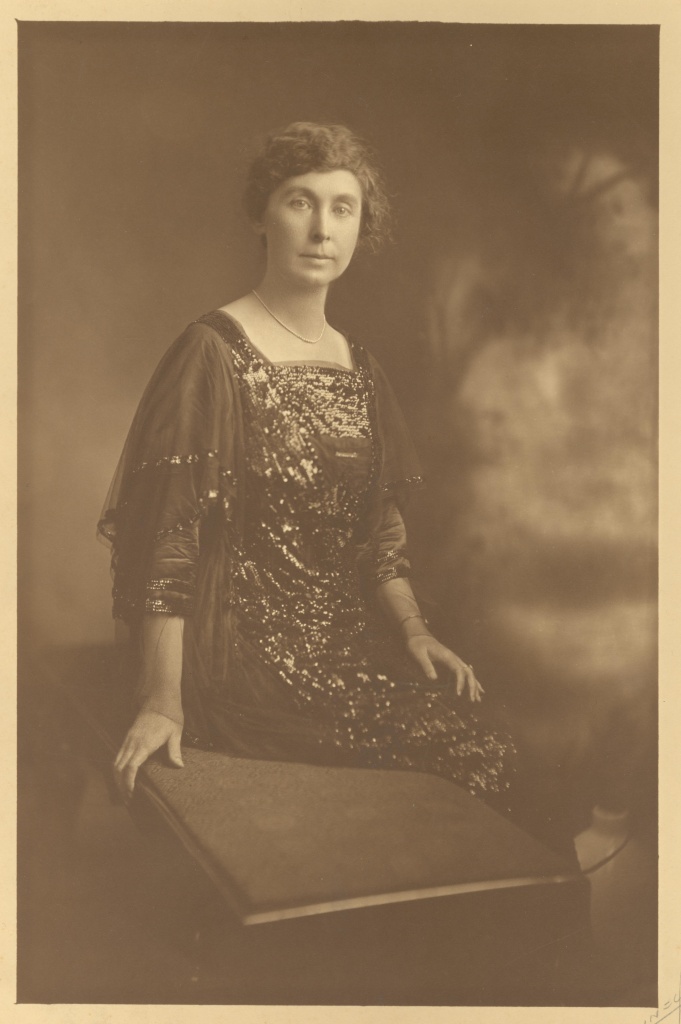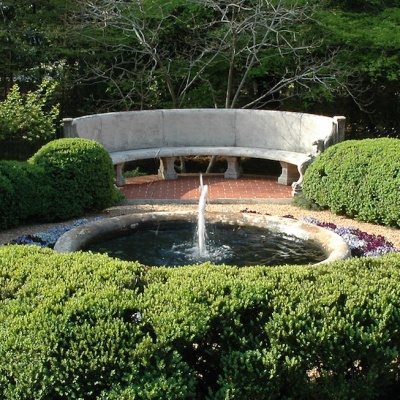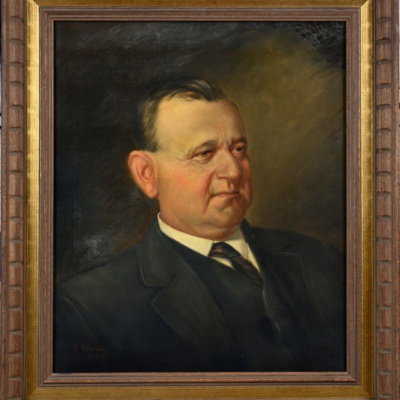A Jewell of a Woman: Ida Cason Callaway

“I am sure that the main interest of both of us was that we would try to be worthy of our ancestors.”
Ida Cason Callaway, 1929
At noon on April 28, 1891 the church bells rang out at Jewell Baptist Church in Hancock County, Georgia. This small prosperous community, located roughly midway between Macon and Augusta, was celebrating the marriage of their own Ida Jane Cason to Fuller E. Callaway of LaGrange. The church was built by Ida’s grandfather, Daniel Ashley Jewell and was one of the most beautiful rural churches in the state. Modeled on a church from his hometown of Winchester, New Hampshire, it featured stunning interior carpentry and was obviously built by extraordinarily skilled craftsmen. A more fitting place for two prominent Georgia families to join together could not be found. Ida later recounted, “…it was the best day’s work we ever did.”
Ida Jane Cason Callaway’s roots trace back to Degory Priest, a passenger on the Mayflower in 1620, and her family background reflects a prominent upbringing. Her maternal grandfather was Daniel Ashley Jewell, the namesake of the small town of Jewell. Daniel left New Hampshire in the mid-1800s and by 1858 owned and operated the Rock Mill Factory, a cotton and wool textile enterprise along the banks of the Ogeechee River. Ida’s paternal grandfather was Adam Cason, who had significant landholdings and in the 1850 census was identified as a planter/farmer.
Ida’s parents were Olivia Pratt Jewell and Alexander Toombs Cason. Alexander and several other family members were pulled into the Civil War and served in the Garrison’s Company of the Confederate Infantry, also known as the Ogeechee Minutemen. Four years after the end of the war, Olivia and Alexander were married and moved into Rock Mill Plantation near Jewell, which Alexander’s father, Cason, had given them as a wedding gift. Rock Mill was a fine fourteen room antebellum house and it was there they would live and raise a family.
In 1870 their first child, Edward, was born at Rock Mill. Edward would study medicine in both South Carolina and New York. He practiced medicine in LaGrange until his untimely death due to typhoid at the age of 27. Olivia and Alexander’s second child was a daughter born on July 16, 1872. She was named Ida Jane, probably after her aunt Ida Jewell and her grandmother Jane Montgomery Cason. Ida would grow up in rural Hancock County and as a relatively young girl was sent to LaGrange to attend Southern Female College.
Founded by the Baptist church, Southern was highly regarded and a perfect fit for a girl with Ida’s pedigree. Young women from across the region attended the school and here Ida studied under an accomplished faculty and ultimately graduated in 1890. It was also here that she met the charismatic and youthful Fuller E. Callaway. According to Ida, “One of Fuller’s cousins was my roommate, and it was she who introduced us to each other during exercises at one of our commencements.” Fuller’s younger half-brother Ely was taking classes in the co-ed primary department at Southern and Fuller would send notes to her via Ely. He also wooed her with bananas which were a rare treat in West Georgia. Over time a relationship developed and when Ida was eighteen-years-old she married Fuller.
Ida and Fuller went on to share thirty-seven years together in marriage, spending their lives in LaGrange and raising two sons, Cason and Fuller Jr. She noted that when they were young, “I rocked and sang my boys to sleep every night. I considered that they were now at the most impressionable age. It was at this time that I would tell them how to grow into men we would be proud of.” After living in three different homes for the first twenty-four years of their marriage, Ida and Fuller moved into their new home at Hills & Dales in 1916 shortly after their 25th wedding anniversary. It was an anniversary gift of magnificent proportions. They were joined by her parents who had left Jewell and made LaGrange their home some years earlier. Ida, true to her rural roots, became the caretaker of historic Ferrell Gardens, tending them for almost twenty-five years, and developing a reputation as a fine gardener. She balanced beautifully her family and public responsibilities, becoming a “fixture” in the community through her involvement in the religious, cultural and social life of LaGrange, the state and the South.
Ida was an active member of the First Baptist Church and its Women’s Missionary Society, the LaGrange Woman’s Club and the LaGrange Memorial Library. Always interested in her ancestry, the LaGrange chapter of the Daughters of the American Revolution was formed under her leadership at Hills and Dales in 1920. She also participated in the Colonial Dames of America, Daughters of the American Colonists, United Daughters of the Confederacy and was an out-of-town member of the Peachtree Garden Club of Atlanta.
Home and family always remained Ida’s highest priorities though, once observing that, “The ‘emancipated’ woman who wants a career instead of a home, husband and children, is ‘emancipated’ from the dearest things in the world.” She and her husband were very devoted to each other, with Fuller attributing his tremendous business success to the encouragement and inspiration that Ida provided. Reared as devout Christians, they lived well within their means, saving on a regular basis, showing aversion to borrowing or living excessively, but at the same time being generous to causes both held dear. Their model relationship was built on respect and consideration of one another, what Ida called “mutual interest.” Despite his desire to work almost continuously, Ida spoke of “many joyful days together” and family photos clearly show they enjoyed fishing and travel. They made trips to Canada, the West Coast, and in 1921, toured fourteen European countries. They also regularly spent time in Miami during the winter and Fuller was fond of saying “…he made his money in LaGrange and spent it in Florida.” In 1929, after Fuller died, Ida highlighted the nine happiest days in their life together; these included the birth of two sons, the marriage of their first son (Fuller Jr. did not marry until 1930), three family baptisms and the birth of their first three grandchildren.
In 1936, after returning from a winter trip to Miami, Ida contracted pneumonia and died at Hills & Dales. Her passing was felt with much sadness across the community. During Ida’s forty-five years in LaGrange she had witnessed firsthand the dramatic growth of the city. With the passing of the Callaway family matriarch, a new era would begin.
While her name is less frequently encountered today, her memory has not been forgotten. Ida continues to be a popular family choice for descendants. She was honored by her son Cason in 1952 when he opened Ida Cason Callaway Gardens in Pine Mountain. While the garden’s name has been shortened, hers still graces the lovely stone chapel at Callaway Gardens which was dedicated by Dr. Norman Vincent Peale in 1962. She is also remembered by all who visit the Ida Cason Callaway chapel at the First Baptist Church on the Square in LaGrange. Perhaps most importantly, her legacy lives on in the serene gardens she cultivated at Hills & Dales, a living tribute to a life well-lived.


